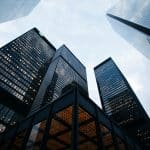The magical allure of Indian cuisine, recognized and savored around the globe, is largely due to its diverse and aromatic spices. These ingredients, culled from ancient culinary traditions, are the soul of Indian cooking. They impart characteristic flavors, therapeutic benefits, and colorful aesthetics to the dishes. Indian cuisine’s unique magic lies in the harmonious blend of these spices, each carefully selected for its distinctive taste, aroma, and health properties.
The Rich Tapestry of Indian Spices
Before embarking on our exploration of the magic of Indian spices, let’s first understand what these treasures entail. Indian spices are a diverse array of aromatic and flavorful substances, categorized into whole spices, ground spices, and spice blends.
A lire aussi : How to organize an unforgettable brunch
Spices in Indian cooking go beyond mere seasoning. They are used in various forms – fresh, dried, whole, chopped, ground, roasted, or fried. They serve multiple purposes: enhancing taste, imparting aroma, adding color, and offering health benefits. It is this multi-faceted role that lends Indian cuisine its magical depth and dynamism.
Importance of Spice Blends in Indian Cuisine
A significant aspect of the magic of Indian spices is their blending. Preparing a perfect spice blend, or ‘masala’, is an art in itself. This intricate artistry involves the judicious selection and proportional mixing of different spices, each contributing its unique quality, resulting in a symphony of flavors.
En parallèle : Cooking with kids: fun and easy recipes
Garam Masala, a universal blend, symbolizes the delicacy of this art. Its composition varies across regions and households but generally includes black and white peppercorns, cloves, cinnamon, mace, black and green cardamom, nutmeg, and bay leaves. Each ingredient is individually roasted to release its aromatic oils before being ground together. This blend adds warmth and depth to dishes, enhancing their overall appeal.
Spices as Color Agents
A key aspect of the magic of Indian spices is their role as color agents. Spices like turmeric, red chili powder, saffron, and coriander powder contribute vibrant hues to Indian dishes, making them visually appealing.
Turmeric, known as ‘haldi’, imparts a bright yellow color. It is virtually indispensable in Indian cooking and carries significant medicinal properties. Chili powder adds a fiery red hue and spiciness, while saffron lends a luxurious yellow-orange tint to dishes, especially sweets and rice delicacies. Coriander powder gives a subtle brown color and a mild, earthy flavor.
Spices as Health Boosters
Indian spices not only tantalize our taste buds but also have numerous health benefits. They contain potent antioxidants, have anti-inflammatory properties, aid digestion, and help combat various diseases.
For instance, turmeric contains curcumin, a compound known for its anti-inflammatory properties and potential in cancer prevention. Cumin, apart from adding a robust flavor, aids digestion and has anti-diabetic properties. Similarly, cinnamon is known for its antioxidant capacity and potential to lower blood sugar levels.
Spices and Regional Variations
Despite a unifying thread of spice usage, regional variations in Indian cuisine are profound. Each region has its distinctive spice palette, shaping its unique culinary identity.
For instance, South Indian cuisine is renowned for its extensive use of curry leaves, mustard seeds, and tamarind. West Bengal, on the other hand, is famous for its usage of the ‘panch phoron’ – a five-spice blend consisting of fenugreek seeds, nigella seeds, cumin seeds, black mustard seeds, and fennel seeds.
In conclusion, the magic of spices in Indian cooking is a fascinating journey of flavors, aromas, colors, and health benefits. These spices, each with a story to tell, come together to create a culinary symphony that resonates with the richness, diversity, and depth of Indian culture. The magic lies not just in the individual spices but in the artful way they are blended and used, transforming simple ingredients into extraordinary dishes.
Spices as Cultural Connectors
Indian spices serve not just as culinary ingredients but also as cultural connectors. They are deeply interwoven into the country’s history, rituals, and traditions. From ancient spice routes to modern kitchen counters, these spices have played a significant role in shaping India’s cultural and culinary landscape.
India’s spice tradition goes back to the ancient Vedic era. Scriptures from as early as 2000 BC mention spices such as turmeric, cardamom, black pepper, and mustard. They were not only used in cooking but also in rituals, medicine, and cosmetics.
The spice trade flourished during the medieval period, with traders from the Middle East, Europe, and Africa flocking to Indian shores for precious spices. This trade brought along cultural exchange and influenced Indian cuisine, leading to the creation of new dishes and cooking styles.
Even today, spices hold immense cultural significance. They are used in religious rituals, weddings, and festivals. For instance, turmeric, due to its auspicious yellow color, plays a crucial role in Hindu weddings. The bride and groom are smeared with a paste of turmeric, signifying prosperity and purity. Similarly, cardamom and saffron are used in sweets prepared during festivals, signifying joy and celebration.
Indian Spices and Global Cuisine
The magic of Indian spices has not just enchanted palates in India but across the globe. From the spicy curries of Thailand, the aromatic tagines of Morocco, to the flavorful stews of the Caribbean – Indian spices have left an indelible mark on world cuisine.
Take, for instance, the use of turmeric. This golden spice, once primarily associated with Indian cuisine, is now a global nutritional superstar. It is used in trendy health beverages like ‘golden milk’ or ‘turmeric latte’, praised for its anti-inflammatory benefits.
Curry powder, a blend inspired by Indian spice mixtures, has found a place in the British pantry and is used in iconic dishes like ‘chicken tikka masala’. Similarly, garam masala is used in Caribbean cooking, brought over by Indian indentured laborers during colonial times.
Cumin and coriander, essential spices in Indian cuisine, are also key in Mexican and Middle Eastern dishes. They add a distinctive flavor and aroma, enhancing the culinary experience.
Conclusion: The Enduring Magic of Indian Spices
In the realm of Indian cuisine, the magic of spices is ever-enduring. These aromatic treasures not only add depth and character to dishes but also serve as a cultural bridge, connecting past to present, home kitchens to global restaurants, and traditional medicine to modern wellness trends.
Indian spices are a testament to the country’s rich culinary and cultural heritage. They tell tales of ancient traditions, regional diversity, and global influence. Each spice, whether it’s the fiery red chili or the fragrant cardamom, adds its unique note to the symphony of flavors that is Indian cuisine.
The art of blending these spices, passed down generations, is a cherished ritual in every Indian kitchen. It’s a ritual that transforms simple ingredients into magical dishes, each with a story to tell.
As we continue to discover and innovate in our culinary endeavors, the magic of Indian spices remains constant, reminding us that food is not just about sustenance, but an experience that feeds the soul.






